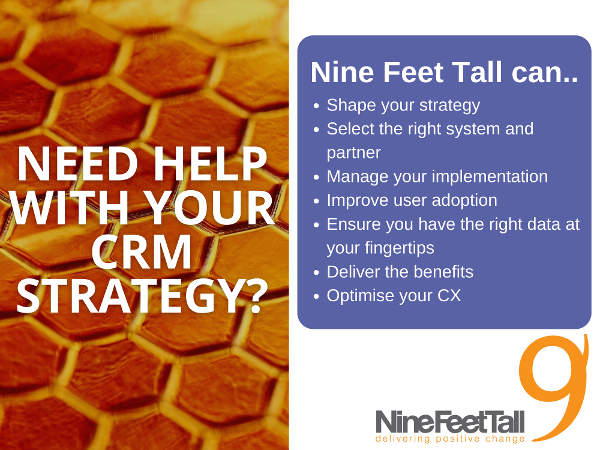The CRM market is huge. Statista predict it will be worth $49.6 billion by 2025. It’s no wonder then that CRM platforms are constantly innovating and selling the next must have big development to stay competitive. From the latest document storage system to the best platform for managing your sales pipeline.
Despite all the extra benefits and cool features new tools have, it is fundamental that the right CRM platform is chosen to fit your business, your people and the right customer data. Many businesses would love to have a great new platform but are concerned about moving from one platform to another. How do you solve this? By having a best-in-class CRM implementation plan that takes care of the functionality, data, migration, and your people.
So what should you consider during CRM Implementation?
Migration & configuration of data.
This may sound dull, but it is worth considering how you want your data to be formatted and configured in the new CRM. You will not have this opportunity that often. Are you making use of all the features on the new CRM or are you replicating your old system?
Communication to different stakeholders.
People often fear change. Especially when you are used to doing something the same way for many years. There is an added fear of transparency and loss of autonomy with all data being shared and readily available. It’s important to ensure your communication to the business is articulating the key benefits of the change, i.e. why are we doing it, how are we doing it, when are we doing it? Consider that you may need a different approach to communicate with each stakeholder in the business.
Aligning Performance Management
It is important that you reward people for adopting new behaviours. Often individuals will have sales targets that are linked to a bonus – so why would they collaborate and share data with their colleagues if that could have a negative impact on their take home? Make sure your performance management recognises team over individual, and quality over quantity.
Training Approach.
Different training methods are effective for different individuals. It’s important to think about your end-user. What will they be using the CRM tool for? What do they really care about? Then take this information and ensure the correct training is on offer for them. Depending on the number of users, can you hold drop-in sessions? Can you appoint colleagues to run training sessions in their own teams? Not having the right training available can massively impact the adoption rate when you Go-Live and why does this matter? First impressions. If your colleagues get a bad first impression of the tool, find it too complicated, and get frustrated, it is going to be a lot harder to create a positive mindset.
Appointing Champions.
Identifying and recruiting Champions within the business can be a fantastic opportunity to build encouragement and adoption of the new platform across the organisation. Keep in mind who and why a champion should be a champion. Rather than having volunteers, think carefully about who can really encourage colleagues to use the new CRM platform (Team Leaders, Management, Leadership.)
Top Tip: Offer the champions an incentive: a VIP pass to the new CRM platform, free food, include them in the review sessions, send out pulse surveys to understand what they think and where you can improve.
Post-Go-Live Support.
After spending months planning, configuring, and delivering your CRM implementation, we want the best chance of success, and what does success look like? That depends on your project, but in most cases, success is having a smooth transition from one CRM to another, everything working as it should and teams understanding and most importantly using the new platform.
To ensure the best chance of user adoption, consider having post-go-live support material in your implementation plan. This could be three allocated slots on the week of Go-Live for anyone to jump in and ask questions. A Q&A document. A specific Teams channel or a WhatsApp group to receive instant support if users are struggling.
Realising benefits.
Once delivered, your CRM implementation doesn’t stop there. The journey has only just started. You can really collaborate and deliver against the benefits you set out and make sure CRM is part of BAU and not a project. You will need to continually look to evolve, optimise and develop it.
To get more from your CRM implementation, contact EstherM@NineFeetTall.com


